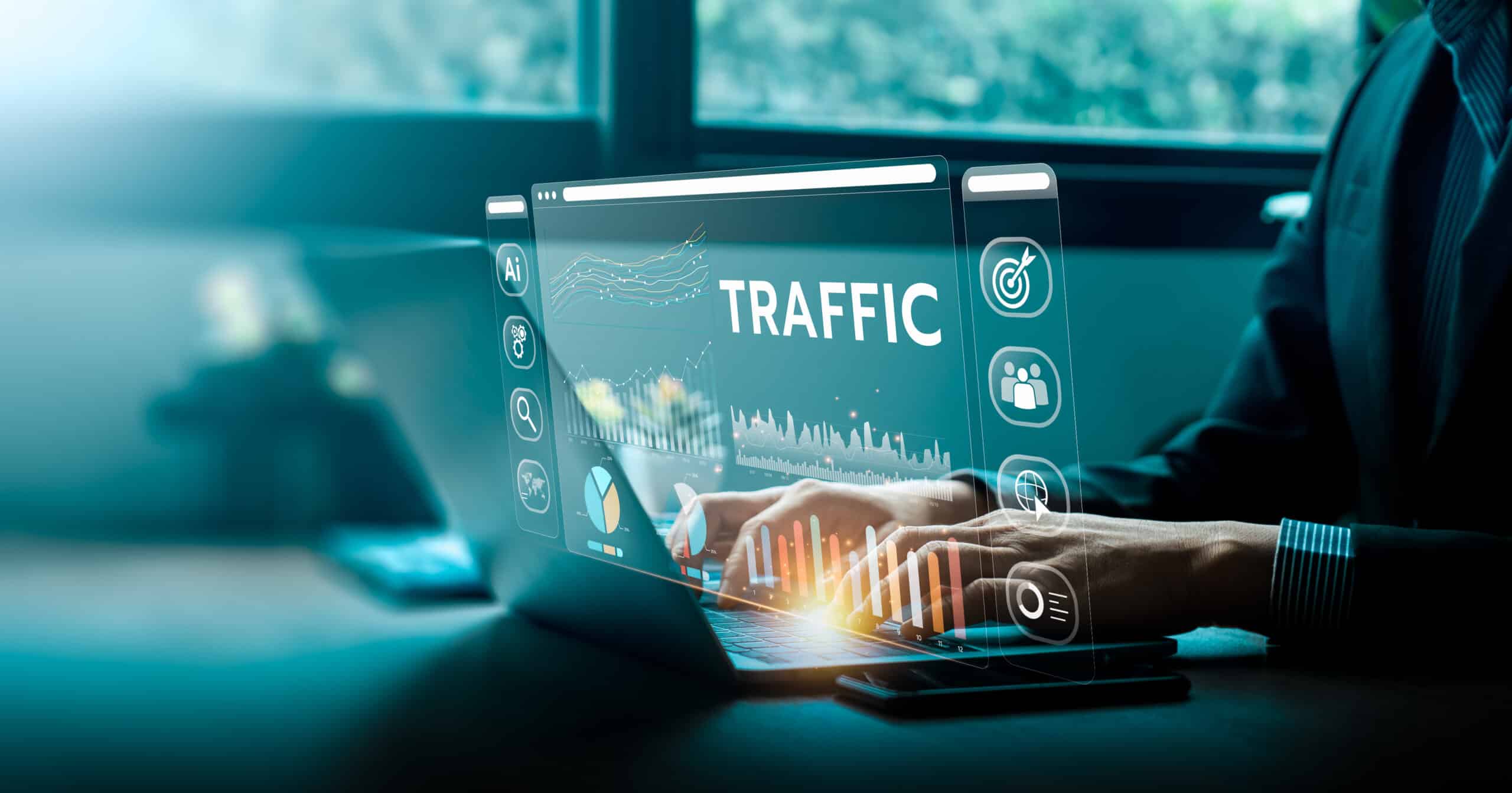
How well do you truly know your prospects and customers? Taking a deep dive into your B2B target market can be your secret weapon to generate high-quality leads and grow sales.
Instead of just viewing customers as numbers in a spreadsheet, think of them as the heroes of their own stories who find a solution to solve their company’s challenge. And your company is the guide to bring your hero to a successful end of the journey.
By mapping the customer journey for each “main character,” you can uncover their challenges, goals, and pain points throughout the decision-making process. Then, you can tailor your sales strategies to meet their needs.
Learn why mapping out the customer journey is such a valuable tool to drive sales and develop meaningful connections with your customers. Dive deep, listen closely, and watch your relationships flourish!
Understanding the Buyer’s Journey
The buyer’s journey is a vital framework in B2B sales and marketing because it guides sales teams through the process of identifying and engaging potential clients. It consists of several stages, each representing a different point in a customer’s decision-making process.
By understanding personas and stages, B2B companies can target their marketing efforts more effectively and ensure they address their customer base’s pain points and needs.
1. Define Each Persona
What are the core segments of the audience you want to reach? Consider looking at your top revenue producers or the types of customers who are most profitable for your business. Then, list each persona so you know you’re trying to target.
This exercise allows you to get a clear understanding of the types of individuals or companies you want to reach as customers.
2. Map Out Each Persona’s Decision-Making Journey
How are you going to engage with each persona at each stage of the journey? Each persona will follow their own set of steps to arrive at doing business with your company. So, you need to capture every critical decision that each segment of your audience will make along the way.
Consider how this looks at each stage of the buyer’s journey.
Awareness Stage
At the awareness stage, potential customers become aware of a problem they are facing. They are trying to wrap their head around the problem, they’re asking colleagues for advice, and they’re performing basic online research.
This is the point where your B2B company needs to capture the attention of this prospect and establish your company as a credible solution provider.
Effective digital marketing strategies at this stage include using social media, blogs, and other content marketing tools to highlight common industry challenges and present your product or service as a viable solution.
By positioning yourself as an authority in your market segments, you increase the likelihood of capturing the interest of your B2B target audience.
Consideration Stage
Once your potential customers recognize their problem, they move into the consideration stage, where they actively seek solutions. They are now ready to define the problem and seek a specific solution. They’re going to ask more detail-oriented questions, compare various solution providers, and start driving toward a decision.
During this phase, your marketing and sales strategies should focus on providing valuable information that helps buyers understand how your product or service can address their specific needs.
Content like whitepapers, case studies, and comparison guides can showcase your expertise and demonstrate the unique benefits of your offerings. It’s essential to highlight the advantages over competitors and how your solution aligns with the expectations of decision-makers within your ideal customer profile.
Decision Stage
In the decision stage, potential buyers evaluate their options and choose a vendor. They might have to receive budget approval on the solution to solve the challenge or face another type of final roadblock that you need to help them overcome.
This is a critical point in the buyer’s journey, as B2B companies must provide a seamless experience helping your customer cross the finish line. Personalized demos, testimonials from existing customers, and detailed pricing information can help sway decision-makers toward your solution.
Make sure to address any remaining objections and emphasize how your product or service is the best fit for their organization. By doing so, you’ll convert interest in your solution into a commitment to buy your product or service.
Success Stage
The success stage is often overlooked in this exercise, but it’s important to capture what success looks like for each persona. This way, you can build the mindset of ensuring customer satisfaction and driving toward repeat business, retention, and referrals.
B2B companies should work closely with new customers to implement the chosen solution, provide ongoing support, and gather feedback to improve their offerings. This stage is also an opportunity to identify additional needs and cross-sell or upsell relevant products and services. By nurturing these new relationships, you can turn satisfied clients into brand advocates who will refer your company to other B2B buyers facing a similar challenge.
Identifying Your B2B Target Audience
Mapping the customer journey is an invaluable tool for understanding your B2B target audience, but it’s only part of the equation. To create a comprehensive digital marketing strategy, you need to define your total addressable market and identify specific segments of your audience.
You want to build on the buyer’s journey exercise to develop a very clear picture of your ideal customer profile, including key characteristics such as industry, company size, job titles, and geographic location. You want to get as specific as possible!
Analyze Your Customer Base
Start by examining your existing customers to identify common traits among those who have successfully adopted your product or service to build out the ideal customer profile (ICP).
Analyze data from customer relationship management (CRM) systems, sales records, and customer feedback to uncover patterns and trends. This information will help you develop a clear understanding of the types of organizations and decision-makers most likely to benefit from your solution.
Create Market Segments
Once you’ve gathered insights from your customer base, use this information to create distinct market segments that represent different personas.
Each segment should have its unique set of characteristics, needs, and pain points. By targeting these specific segments with tailored marketing messages and product offerings you captured during the buyer’s journey process, you can increase the effectiveness of your B2B marketing efforts and improve your chances of converting leads into customers.
Refine Your Digital Marketing Strategy
With a clear understanding of your B2B target audience and the various stages of the buyer’s journey, you can refine your digital marketing strategy to better engage and nurture potential clients.
Focus on creating content and other digital marketing campaigns that resonate with your ideal customer profile and address their specific needs at each stage of the buyer’s journey.
For example, you can utilize social media, email marketing, and other digital channels to reach your target audience and drive engagement.
Collaborate with a Digital Marketing Agency
If you’re unsure how to effectively map the buyer’s journey or identify your target audience, consider partnering with a digital marketing agency. At Marketing Refresh, our team has walked through numerous buyer’s journey exercises to help our clients better understand who they’re targeting and how to reach each persona.
We’ll handle the heavy lifting of interviewing groups of people you already do business with, defining your personas, and mapping out the decision-making process for each persona.
Then, after we define your B2B target market, we’ll take these insights to build out a digital marketing program that will generate targeted leads to support your sales team. This is how sales and marketing can work together for success.
Let’s Define Your B2B Target Market
Understanding your B2B target market is essential for developing a successful digital marketing strategy. By mapping the customer journey and identifying key market segments, your B2B company can tailor marketing efforts to address the unique pain points of your target audience.
We are confident that taking a strategic approach will improve the effectiveness of your sales efforts on the path to building strong, lasting relationships with your heroes – the customers.
Let’s get started today by discussing what you currently know about your audience. We can take it from there to turn the buyer’s journey into a valuable sales tool for your company.
FAQs
1. What is the importance of mapping the customer’s journey in B2B marketing?
Mapping the customer journey helps you understand how potential clients interact with your brand at each stage of the buying process. This knowledge enables companies to tailor marketing strategies to address the needs of their target audience.
2. How do you identify the ideal customer profile in a B2B context?
To identify the ideal customer profile, businesses should analyze their existing customers to pinpoint common traits and characteristics. Key factors to consider include industry, company size, job titles of decision-makers, and geographic location. Gathering data from CRM systems and customer feedback can provide valuable insights into developing a precise customer profile.
3. Why is creating market segments important in B2B marketing?
Creating market segments allows companies to categorize their total addressable market into distinct groups. You can capture each group’s unique characteristics, needs, and pain points. Businesses can then craft marketing messages that are highly relevant to each segment. The result is more effective digital marketing campaigns and improved conversion rates.
4. How can B2B companies foster long-term customer relationships post-purchase?
B2B companies should ensure the successful implementation of their solutions and provide ongoing support. Regular communication and gathering customer feedback can help improve retention. Companies can also identify additional opportunities for cross-selling or upselling, converting satisfied clients into brand advocates.
5. What role does a digital marketing agency play in B2B marketing strategy?
A digital marketing agency can offer expert guidance in mapping the buyer’s journey and identifying target audiences. Agencies help businesses develop customized marketing strategies aligned with their specific goals and objectives. Then, you can optimize marketing efforts to increase visibility in the competitive B2B landscape.


